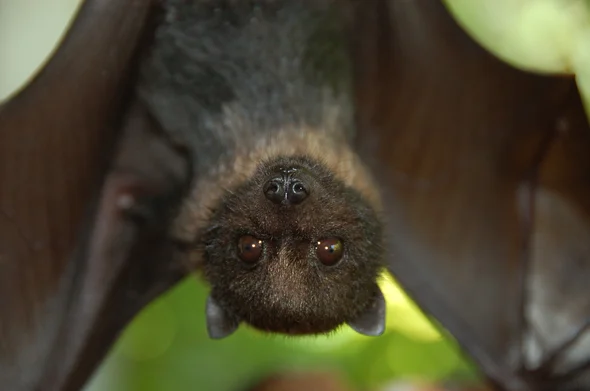The Old World fruit bat is a large-eyed bat found in Africa, Southeast Asia, and Australia. It belongs to the Pteropodidae family and has over 180 species.

In a stark warning, recent research led by Professor Tigga Kingston from Texas Tech University sheds light on the distressing decline of Large Old World Fruit Bats (LOWFBs), commonly known as flying foxes.
Collaborating with F.B. Vincent Florens from the University of Mauritius and Christian E. Vincenot from the University of Luxembourg, the study underscores the critical need for immediate, coordinated global conservation efforts to avert the extinction of these vital bat species.
The findings, published in the journal Annual Review of Ecology, Evolution, and Systematics, reveal a concerning decline in conservation status over the past 50 years.
The research draws on data from the International Union for the Conservation of Nature Red List assessments and an extensive literature review, highlighting the alarming reality that LOWFBs are now the most endangered bat group globally.
Approximately 70% of the 75 existing species are threatened with extinction due to multifaceted challenges, including hunting, land-use changes, habitat degradation, climate change, invasive species, urbanization, and persecution.
Professor Kingston, the Old-World co-chair of the Bat Specialist Group of the IUCN’s Species Survival Commission, initiated this research following her involvement in addressing the mass culling of 30,000 Pteropus niger fruit bats in Mauritius in 2015. The bats faced a threat due to conflicts over lychee fruit crops, prompting Kingston’s advocacy for a collaborative solution that safeguards both the crops and the fruit bats.
The urgency of the situation is emphasized by the disproportionate impact on LOWFBs compared to other bat species. Their island distribution accelerates population declines, heightening vulnerability to various threats. Declining LOWFB populations have far-reaching consequences, disrupting crucial ecosystem services such as pollination and seed dispersal, particularly on islands.
The research highlights that six out of the nine recent bat extinctions were LOWFBs from small islands, underscoring the severity of the situation. Unsustainable hunting and habitat loss emerge as significant contributors to these alarming declines.
“In essence, we are witnessing the potential extinction of a group of bats that play keystone roles in maintaining the health and balance of ecosystems,” Kingston commented. “Their decline not only jeopardizes their own survival but disrupts vital ecological interactions, such as pollination and seed dispersal, with far-reaching consequences.”
To address these urgent challenges, the researchers propose a comprehensive strategy. Recommendations include protecting and restoring native habitats, monitoring and modeling population trends, engaging local communities through campaigns, strengthening legislation and enforcement, considering captive breeding for select species, and establishing a multinational LOWFB Network to enhance research capacity.
Conservationists and researchers are issuing a fervent call to action, urging the global community to unite in safeguarding these crucial bats and the ecosystems they sustain. Preserving flying foxes is not merely about saving a species; it is a vital step in ensuring the health and resilience of entire ecosystems that rely on their keystone ecological roles.
The time to act is now to prevent the impending loss of these remarkable creatures and the invaluable services they provide to the natural world. The call for global action resonates as a crucial step toward preserving biodiversity and maintaining the delicate balance of ecosystems that depend on the vital contributions of Large Old World Fruit Bats.
The Old World fruit bat is a large-eyed bat found in Africa, Southeast Asia, and Australia. It belongs to the Pteropodidae family and has over 180 species. These bats eat fruits by hanging upside down, using one foot to hold the food, and then consuming chunks, juice, and spit out the pulp and seeds.
They belong to a large family of plant-eating bats that inhabit the paleotropics, with many species endemic to islands like Madagascar, Malaysia, Australia, New Caledonia, and Japan. The extinction of these bats could significantly impact the ecosystem and plant pollination.